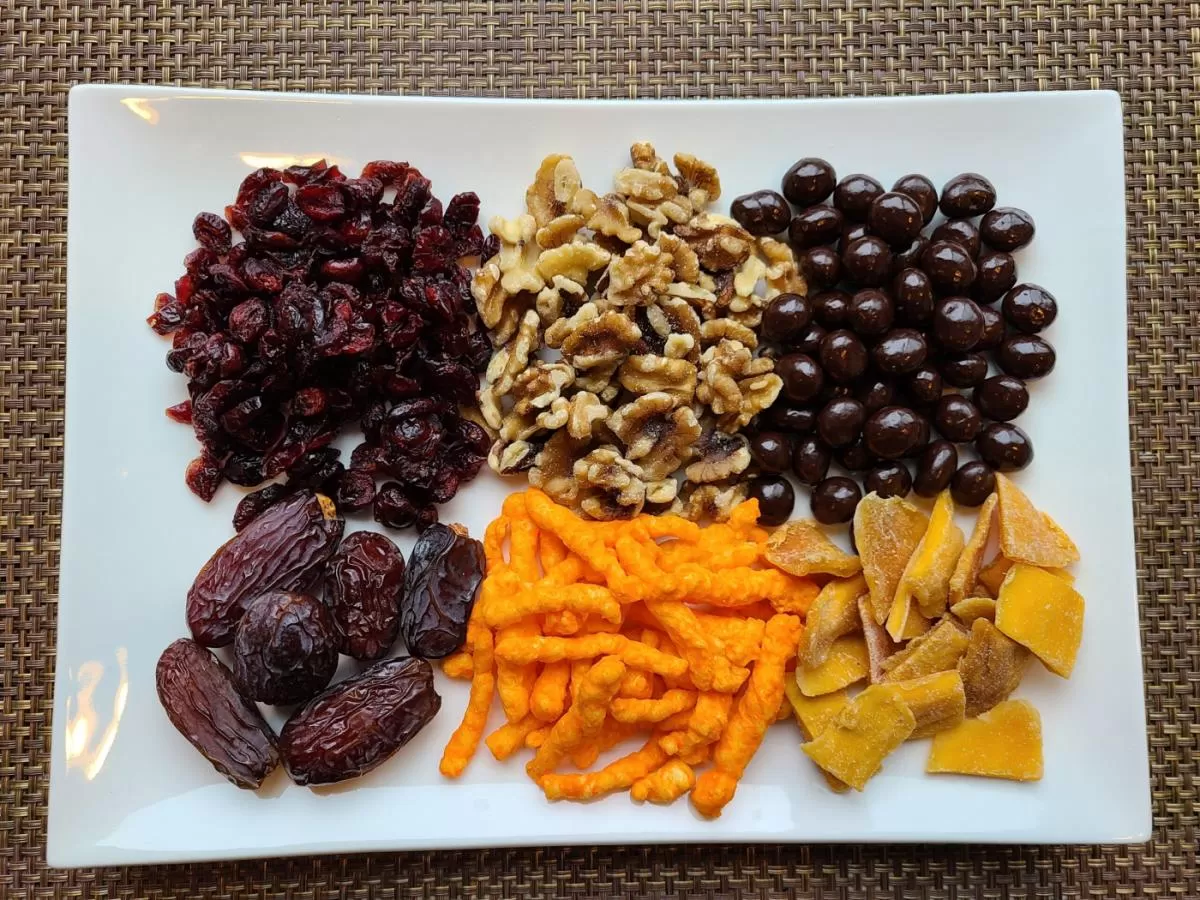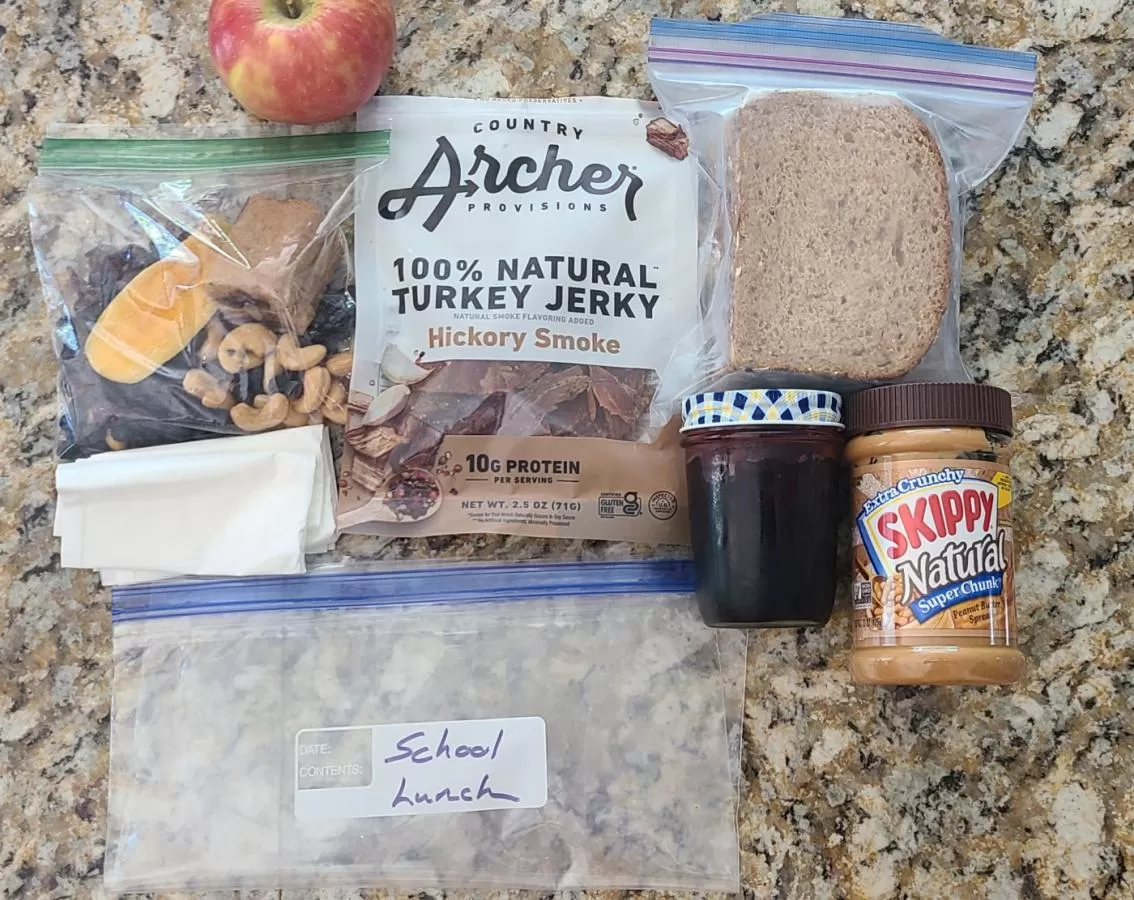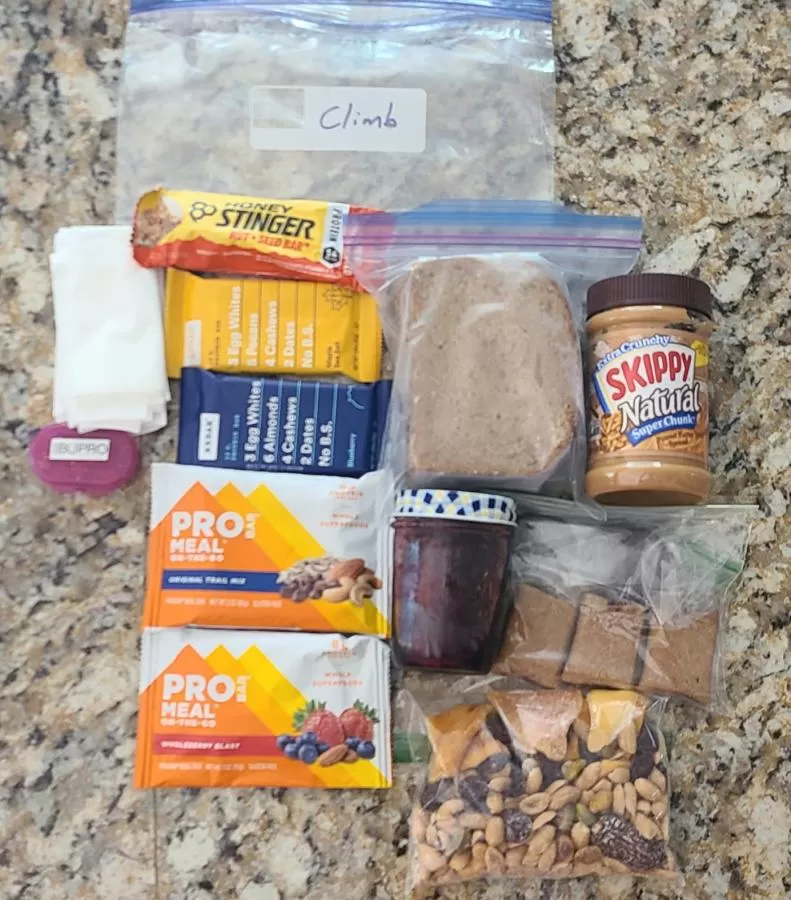What Food Should I Take Mountaineering on Summit Day?
Published: 02/10/2021

Variety of foods for mountaineers
Dried cranberries, walnuts, chocolate covered espresso beans, dates, Cheetos and dried mango offer a smorgasbord to the high altitude athlete.
What's the best food to eat on high altitude treks, climbs or expeditions?
Perceived exercise effort is increased at altitude. There is a real decrease in exercise capacity above 5000 feet elevation (1) and exercise just feels harder. To make matters worse, usually sleep is compromised at high altitude as well. Eating enough calories and drinking enough can help you feel better.
On climb day, ascending to high altitude can cause a lack of appetite. So pack whatever food tastes the best to you and will be something you will want to eat regularly. During the climb at altitude the focus is on consuming enough calories, carbohydrates and fluids. As you ascend, eat often, and eat snacks that will maintain your glycogen levels to use as fuel.
During your training the food you eat in your meals and training sessions should be nutritious and antioxidant rich to promote recovery and performance. I recommend real foods.
Experiment During Training
To determine which foods fuel your body best, try different items on various training hikes to see how your body feels after consuming each snack. Also, keep in mind that some foods can cause GI upset. So this is best discovered before climb day.
Just Eat!
Climbing a mountain burns calories. Lots of them! Rising stress hormone levels place a higher demand for fuel on your body. As calorie needs increase, athletes need to add to their caloric intake.
Eat Carbohydrates
Moderately increasing carbohydrate intake is key in replacing glycogen stores in your body when climbing and compensating for the increased caloric demand at altitude. Aim for 30 to 60 grams of carbs per hour.
Hydrate
Altitude makes water loss worse because at altitude you will breathe faster and more deeply. This is because the higher the altitude the lower the air pressure, so you take more breaths for the same amount of oxygen. This extra breathing leads to fluid losses. If you aren't staying on top of your intake, dehydration may sneak up, and leave you feeling light-headed and nauseated.
When you are over 10,000 feet elevation drink 3 to 5 liters of water plus 200-300 grams of carbohydrate. Monitor your urine color. It should be a light yellow. Sports beverage powder packs easily in a small ziplock bag to add to a water bottle.
Drink at regular intervals every 20-30 minutes to stay ahead of the hydration game
Recommended sports beverages:
Gatorade Endurance, carbs
Fluid Performance Natural, carbs
Gatorade Thirst Quencher, carbs
Hammer HEED, carbs
Accelerade, carbs and whey protein
Powerbar Recovery, carbs and whey protein
Food Packing Considerations
When packing food for your upcoming climb it's important to consider a few variables: calorie density, weight, durability, and enjoyment.
Food is important. Plan out your meals and snacks, pack them as well as you can in a way that will make them easy to eat on the upper mountain when you are cold and tired. Some foods come in a convenient packaging and others will need to be repacked in a Ziploc.
For day one, if you have access to refrigeration, you can bring some fresh foods: meat sandwich, pizza, pita and cheese, string cheese, hardboiled eggs, fruit, carrot sticks, orange slices, for instance. For perishable food, it is advisable not to keep them above 41F for longer than 2 hours. Food-borne bacteria can multiply rapidly especially so in over 70F. It is better to be safe than sorry. Having the"runs" in the mountains would be a nightmare.
You can make a disposable ice pack by filling a sandwich size zip lock with water, squeeze the air out then put it in another zip lock bag and freeze. If you have kids that drink juice in a pouch, freeze one of those and use it as an ice pack. When it thaws you have juice.
Below are a few tips to consider when packing food for mountaineering:
- Bring a variety of foods that you like.
- Bring a mix of sweet, salty and savory.
- Bring a mix of protein, quick burn and slow burn carbs.
- Things get beat up in a backpack so consider durability (think bagels vs. bread and thick pretzels vs. thin ones).
- Bring food you know and like and have experimented with on your training hikes.
- Remember extra food is far better than not enough, but not too much. Food is heavy! That's why it takes some careful planning so your pack isn't too heavy.
- Think about bringing no more than a pound per day.
- You can and should eat every time you stop for a break. On a typical 3 day climb of Mt. Rainier, I recommend bringing about sixteen 200-400 calorie snacks (that gives you a little extra).
- Keep some small snacks like cut up mangos, nuts, protein bars cut into bite-size in your pockets so they are easily accessible when you take a break. Keep bars that freeze in your inner coat pockets to keep them warm.
- Test the food you are taking when it's frozen to see if it's still edible.
Mountaineering Food Ideas:
Here are some foods to keep you powered up on your high altitude climb:
- Homemade protein energy balls
- Peanut butter in a cup
- Almond Butter squeeze packs
- Chocolate bars. Fun-sized Snickers bars are small enough that you can put them in your mouth to thaw if they're frozen
- Shelf Stable 8 ounce Silk almond milk
- Shelf Stable 8 ounce 1% Organic milk
- Dried fruit: mangos, dates, apricots, pineapple, apple (cut into bite size)
- Powdered sports beverage, see my recommendations above
- Planter's Antioxidant Mix
- Roasted chickpeas, Saffron Road Organic
- Roasted chickpeas, The Good Bean
- Honey and banana sandwich on whole grain bread, bagel, tortilla
- Tortilla wraps
- Jerky cut into bite size
- Individual Cooked Whole Grains Pouch
- Energy and granola bars
- Clif Shot Blocks
- Caffeinated gel packets or Clif Shot blocks with caffeine
- Wild Albacore Tuna Pouches, 3 ounce
- Starkist Tuna Pouch
- Chocolate-covered espresso beans, almonds, peanuts or pretzels, Peanut M&Ms
- Nuts that don't crumble like cashews and almonds
- Bagels
- Tortillas with peanut butter
- Durable crackers like Triscuits
- Cheetos
- Thick pretzels
- Gummies, Hot Tamales, gummy orange slices, Swedish Fish.
- Hard candies to suck on: peppermints, lemon drops, Jolly Ranchers, Werthers
- Cookies, oatmeal cookie, fig bars
- Bars: protein bars, energy bars, granola bars, Kind Nut Bars
- Fruit leather
- Fruit leather
- Trail mix, like Power Up
- Applesauce Pouches
- Huma Chi Energy Gel
- Annie's Organic Bunny Fruit Snacks
- Kind Fruit Bites
- Pringles in a can, small size. Not sure how I feel about recommending these but most of my mountaineering clients love these for the salt and the fact that they are in a container that doesn't crush
How to Pack Your Food

Predetermine what foods and beverages you want to take for what parts of your mountaineering trip.
As an example, my husband recently participated in a 4 day mountaineering climb on Mt. Rainier. We first made note of what meals he needed to prepare. See the meals in bold.
He wanted a peanut butter and his Mom's homemade jam sandwich for both climb school and climb day. It was easy to pack 2 slices of bread in a quart size ziptop freezer bag, a small jar of PB and the jar of jam in a small cooler with a plastic knife. He also packed some fruit and yogurt for snacks at the hotel.
Wednesday: Orientation. Snack. Dinner Out.
Thursday: Climb School. Breakfast at the hotel, Climb School Lunch and dinner out.
Friday: Hike to Camp Muir, Dinner at Camp Muir
Saturday: Breakfast at Camp Muir, Climb Day Lunch and Snacks
Calculate your caloric, carbohydrate, fluid and protein needs per hour.
Then we put together a list of the food items that you want for each meal and double check that the items meet your fueling needs.
Then put each meal into a labeled ziptop freezer gallon bag.
Pro tip: Put a few Ibuprofen in a tiny container and stash that in with meals so its easy to get in case you have a headache from the altitude.
Source

Wehrlin JP, Hallén J. Linear decrease in .VO2max and performance with increasing altitude in endurance athletes. Eur J Appl Physiol. 2006 Mar;96(4):404-12. doi: 10.1007/s00421-005-0081-9. Epub 2005 Nov 26. PMID: 16311764.
Be the First To Know!

Maria Faires, RD
Want the scoop on the latest nutrition research, healthy recipes, and nutrition tips delivered directly to your inbox?
Write and let me know you'd like to subscribe to my newsletter! *
I'm a Dietitian and Master Personal Trainer who educates and inspires people LIKE YOU to shape their eating, exercise and lifestyle habits so that they can live their healthiest lives!
*I will never share your information!
NEWSLETTER SIGN UPCategories: Food Hiking and Mountaineering
Tags: #exercise
Active Nutrition is a participant in the Amazon Associates Program, an affiliate advertising program designed to provide a way for websites to earn advertising revenues by advertising and linking to Amazon. If you click on one of my recommended item links and then place an order through Amazon, I receive a small commission on that sale, at no extra expense to you of course. This is a way to support me and my work every time you shop at no cost to you.





